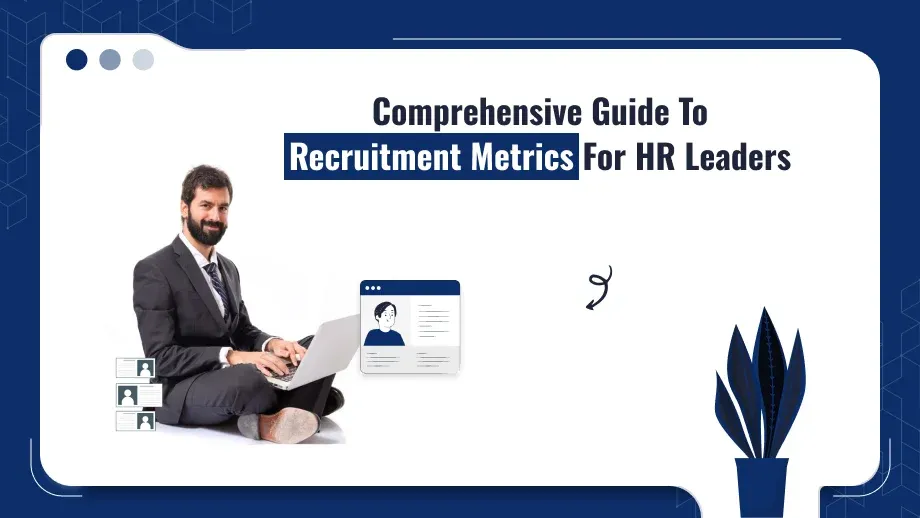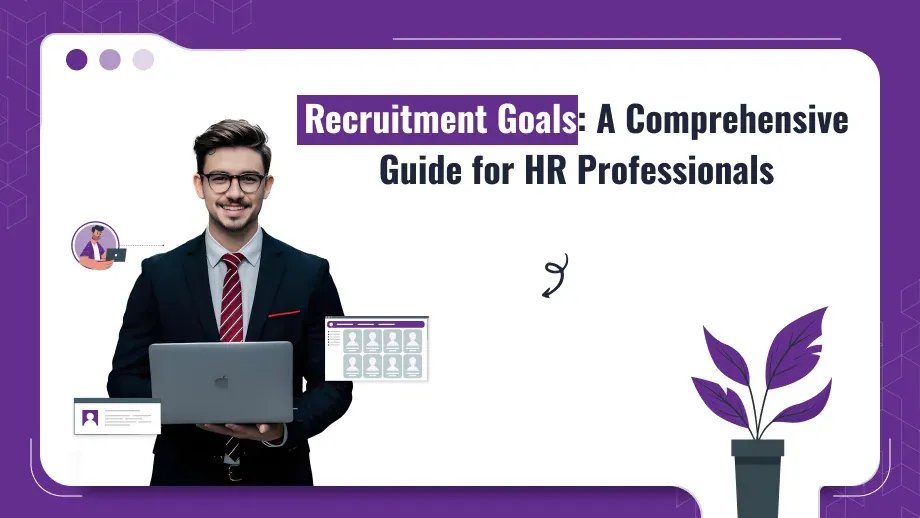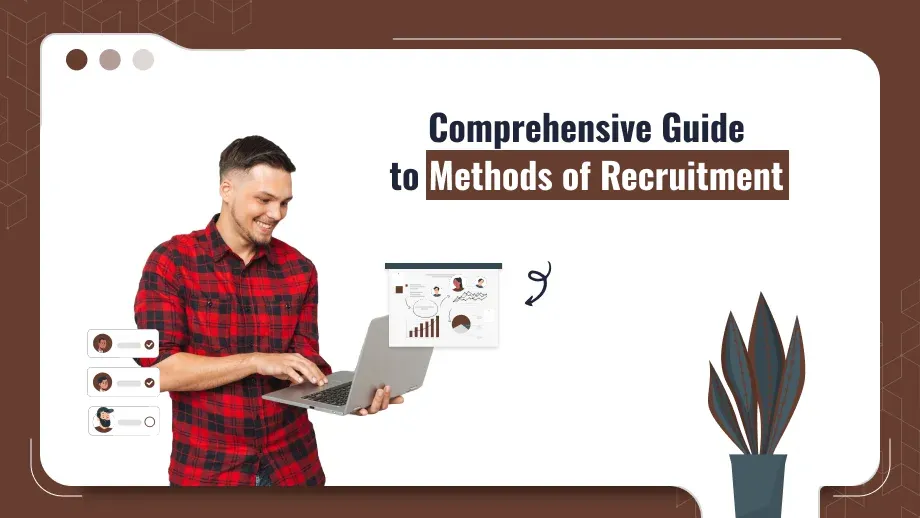
Ever thought your recruitment process could be more efficient? That’s where recruitment metrics come in. These key stats offer assistance you track everything from time to contract to candidate satisfaction. For HR pioneers and CEOs, it’s basic data to refine strategies, spare costs, and make way better hiring choices. In a world where ability attraction and retention are more competitive than ever having recruitment metrics in HR will provide your trade a genuine advantage.
This direct will go into the importance of recruitment metrics, the key ones to track, and how you can utilize this information to streamline your enlistment process.
What Are Recruitment Metrics?
Recruitment metrics are measurable data points that track your enlisting preparation. These metrics grant you perceivability into how your recruitment strategy is aligned with your business goals. Cases are a time to enlist, cost per enlist, candidate fulfillment, and quality of enlist. By following these metrics HR pioneers can distinguish where the preparation can be progressed and make changes.
Using its metrics in HR helps organizations remain competitive by making sure their recruitment is efficient and effective. By gathering information on the time to contract, cost, and performance of unused joiners companies can adjust their recruitment strategy to the overall trade goals.
Why Recruitment Metrics Matter
Tracking recruitment isn’t fair about data; it’s almost making choices that drive trade results. Here’s why these metrics are important for HR professionals and CEOs:
Speed Up Hiring
One of the key recruitment effectiveness metrics is time to enlist. If your handle is as well slow you’ll lose beat candidates to competitors. Following this metric will help you distinguish the bottlenecks and make the handle more proficient. This will provide your trade an edge in attracting the best talent.
Reduce Recruitment Costs
Cost per enlist is another key metric that will show HR groups how much they’re spending to bring in modern joiners. With this information, you can center on more cost-effective recruitment methods like worker referrals or inside promotions. Checking costs will guarantee you’re getting esteem for your venture which is critical in tall turnover industries.
Hire Way Better Candidates
By tracking the quality of contracts HR leaders can determine how well unused joiners perform in their parts and how long they remain with the business. This information will help refine the process so you’re bringing in employees who will succeed and stay long-term.
Meet Differences Goals
Metrics like diversity recruiting metrics are basic to guarantee your enlistment preparation is comprehensive and reasonable. By following differences at each stage of the enlistment funnel companies can guarantee they are meeting their diversity and consideration objectives and avoiding predisposition in the hiring process.
It gives HR teams and officials visibility into the hiring process and ensures recruitment is adjusted with the by and large commerce goals.
Recruitment Metrics to Track
Time to Hire
This metric measures the time from work posting to offer acceptance. A longer time to contract implies lost efficiency and an increased chance of losing beat candidates to competitors. By utilizing an Applicant Tracking System (ATS) HR groups can speed up the handle without compromising on quality.
Cost per Hire
Cost per contract is the add-up fetched to fill a part, counting work ads, scout expenses, and time spent by inner staff. Reducing this cost without compromising on quality will make strides in your enlistment budget. By following this metric you can too compare costs over diverse divisions or districts to ensure recruitment efficiency.
Candidate Experience
The candidate’s experience is a basic portion of the recruitment preparation. If candidates have an awful experience during interviews or communication they might decline an offer or share negative input. Post-interview surveys can help you degree candidate satisfaction, giving you valuable input to progress the recruitment preparation. This information is key to understanding the effect of communication amid hiring.
Source to Hire Ratio
Knowing where your best candidates come from is basic to refining your recruitment strategies. This metric will tell you which sources (e.g. worksheets, social media, worker referrals) are bringing in the best talent. You can then center your resources on the channels that work for your business.
Quality of Hire
This metric measures how well modern joiners perform on their part and how long they remain with the commerce. Tall turnover or poor performance means your recruitment handle is broken. Regular feedback and Employee evaluation feedback will offer assistance track this metric, giving you information on the adequacy of your hiring process.
Diversity and Inclusion Metrics
Tracking diversity recruiting metrics of enlistment? is basic to guarantee your enlistment preparation is inclusive and bias-free. These measurements determine the differences between candidates at each arrangement of the contracting preparation and the differing qualities of the last contracts. By analyzing this information HR teams can identify diversity holes and make changes to move forward inclusivity.
Transform your hiring strategy with powerful recruitment metrics.
Gain insights, identify trends, and optimize your recruitment process for better results!
Advanced Recruitment Metrics for HR Strategy
Recruitment ROI (Return on Investment)
Recruitment ROI measures the esteem created from your recruitment efforts. This incorporates the execution of modern contracts, maintenance rates, and overall effect on the trade. Tracking recruitment ROI will assist you know if your enlistment techniques are delivering expected returns.
Employee retention Linked to Recruitment
Retaining workers is as imperative as hiring them. By connecting retention rates to the recruitment prepare HR pioneers can determine how well-unused joiners are coordinated into the trade. If maintenance rates are moo it may cruel issues in the enlisting handle such as not assessing cultural fit effectively.
Offer Acceptance Rate
The offer acceptance rate is the rate of work offers acknowledged by candidates. A moo acceptance rate implies your offers aren’t competitive sufficient or the candidate had a bad experience amid the recruitment handle. To improve this metric you may be required to survey your salary offers, benefits bundles, or the candidate’s encounter.
How to Use Recruitment Metrics for Growth
Use Technology to Simplify the Process
Tools like Applicant Tracking Systems can offer assistance you collect and analyze recruitment data, automate the contracting preparation, and recognize where you can progress. This permits the HR group to center on procedures, not manual tasks.
Analyse Data Frequently
Recruitment is an ongoing preparation so your data should be reviewed frequently. See for patterns over time, e.g. a drop in candidate satisfaction or an increment in cost-per-hire, and adjust as needed.
Involve Stakeholders
Recruitment is a team effort. Get hiring managers, executives, and indeed employees involved in the analysis of recruitment metrics so everybody is adjusted to the business goals and changes to the enlistment handle are made based on data, not assumptions.
Act on Employee Feedback
Once candidates are hired collect Employee Evaluation Feedback to measure how well new joiners are performing and how well they’re integrating into the business. Use this data to refine your recruitment strategies further.
How to Execute Recruitment Metrics
- Set Clear Goals: Guarantee your recruitment metrics are adjusted with specific business goals, whether that’s time-to-hire or diversity.
- Involve Partners: Get hiring managers, executives, and recruiters included in the investigation and elucidation of enrollment information so everybody is on the same page.
- Review and Adjust Frequently: Regular surveys and adjustments will keep your metrics relevant and effective.
- Use Technology: Use tools like ATS and feedback management systems to simplify the process and reporting.
Recruitment Challenges and How Metrics Can Help
Attracting Top Talent
If your work advertisements aren’t bringing in the right candidates you may be publicizing in the off-base places. By following your source-to-hire proportion you can center your enrollment budget on the most compelling channels, e.g. referrals or industry-specific worksheets. This will ensure you’re investing cash in recruitment activity that brings in the best talent.
Reducing Candidate Drop Offs
Are candidates dropping out of your recruitment process halfway through? Recruitment metrics like application completion rates and candidate satisfaction scores will give you clues. A long and complicated application process or lack of communication can deter candidates. Simplify the process and communicate with timely updates and you’ll reduce drop-off and keep potential hires engaged.
Reducing Time-to-Hire
A long hiring process can cost you beat ability, especially in competitive markets. By analyzing time-to-hire and identifying bottlenecks, e.g. slow meet scheduling or delays in decision-making, HR groups can decrease this time without compromising quality. This will ensure you get the best ability quickly and reduce the strain on your recruitment reporting metrics.
Retaining Employees
High employee turnover means your recruitment process isn’t effectively screening for cultural or role fit. Retention rates for new joiners will show you if the right candidates are being hired. Regular Employee Evaluation Feedback will help you measure this and adjust the hiring process. This will also help you understand if the job expectations are being communicated clearly during recruitment.
Meeting Diversity Goals
Companies committed to inclusion should be tracking diversity recruitment metrics. If you’re not pulling in or contracting an assorted workforce the issue may be in how you’re sourcing candidates or meeting. Review these measurements routinely to guarantee you’re assembling your diversity and consideration objectives and making adjustments to dodge oblivious bias.
How to Use Recruitment Metrics to Grow
Make Data-Driven Decisions
Data from recruitment metrics HR groups to make way better choices. For case, if your cost-per-hire is tall but the quality of your contract isn’t improving it’s time to re-think your strategy. Data will tell you what’s working and what’s not so you can alter. Whether it’s switching workboards or improving candidate communication making choices based on metrics is key to growth.
Use Metrics to Set Targets
Set measurable targets based on the data you have. If your time-to-hire is over industry guidelines you may set a target to decrease it by a certain rate in another quarter. Monitoring regularly will show you if you’re on track or require to make further adjustments. This metric-driven target setting will make your recruitment preparation more efficient over time.
Focus on Employee Retention
Employee retention is one of the most important recruitment metrics. If your modern joiners aren’t remaining there’s an issue in the recruitment process. Maybe the expectations set during recruitment don’t coordinate with the reality of the part. By following maintenance information you can spot designs and alter the hiring process to find candidates who are more likely to remain long term. This will prevent unnecessary turnover costs and keep your workforce stable.
Use Tools for Automation and Efficiency
Using instruments like Applicant Tracking Systems (ATS) or further remote employee monitoring will allow for more efficient information collection and reporting. These systems can track multiple metrics such as time-to-hire and offer acceptance rates giving HR groups a 360-degree see of the enlistment pipeline. Robotization will free up time for HR professionals to center on more strategic tasks rather than manual tracking.
Summary
Understanding and using recruitment metrics is key to moving forward the enlisting handle, diminishing costs, and expanding the quality of unused enlistment. For HR leaders tracking metrics like time-to-hire, cost-per-hire, and candidate fulfillment will give them significant insights to make way better contracting decisions. By using tools like Applicant Following Systems and employee feedback management HR teams can turn recruitment into a more data-driven, efficient, and effective process.





